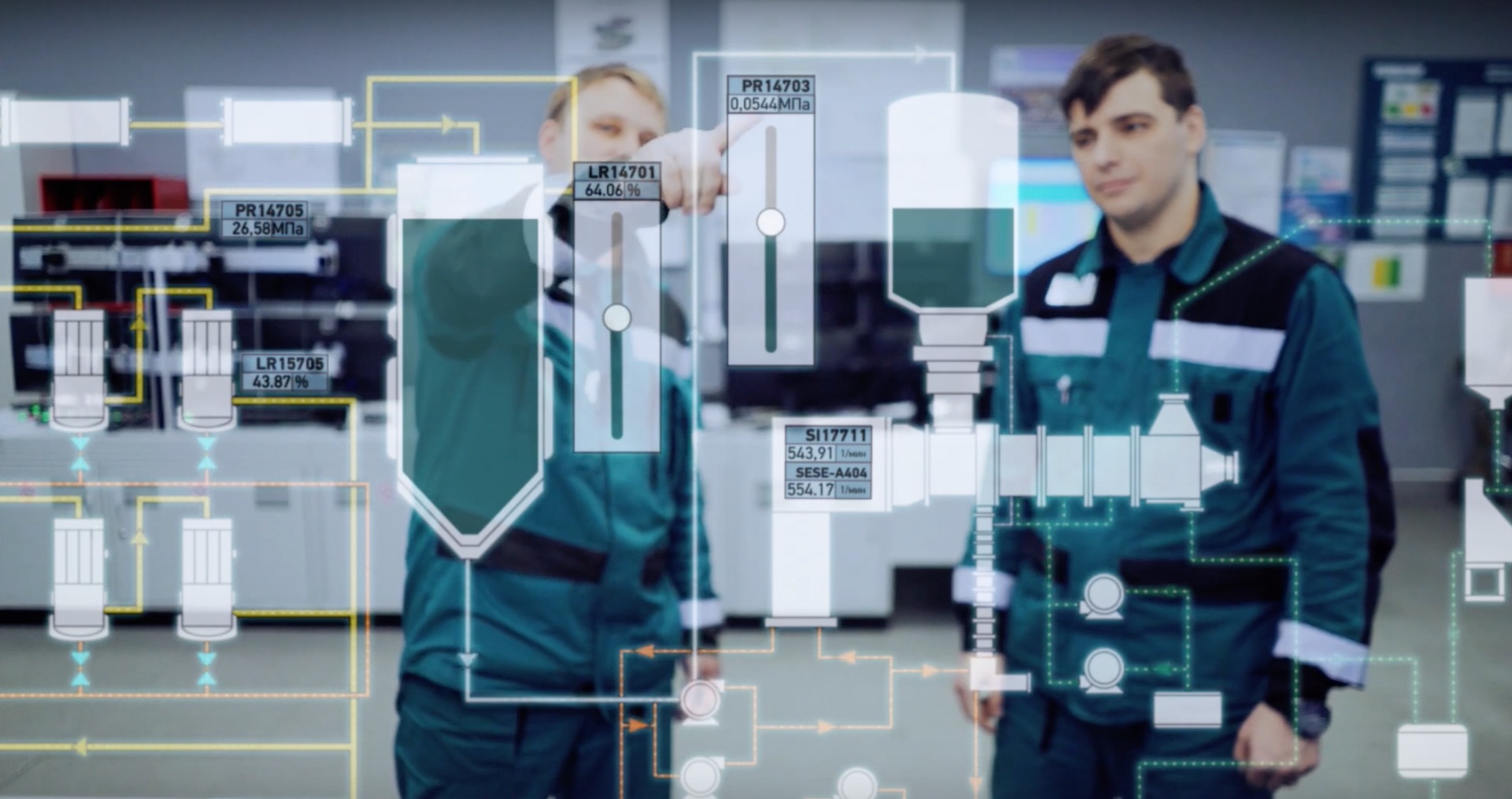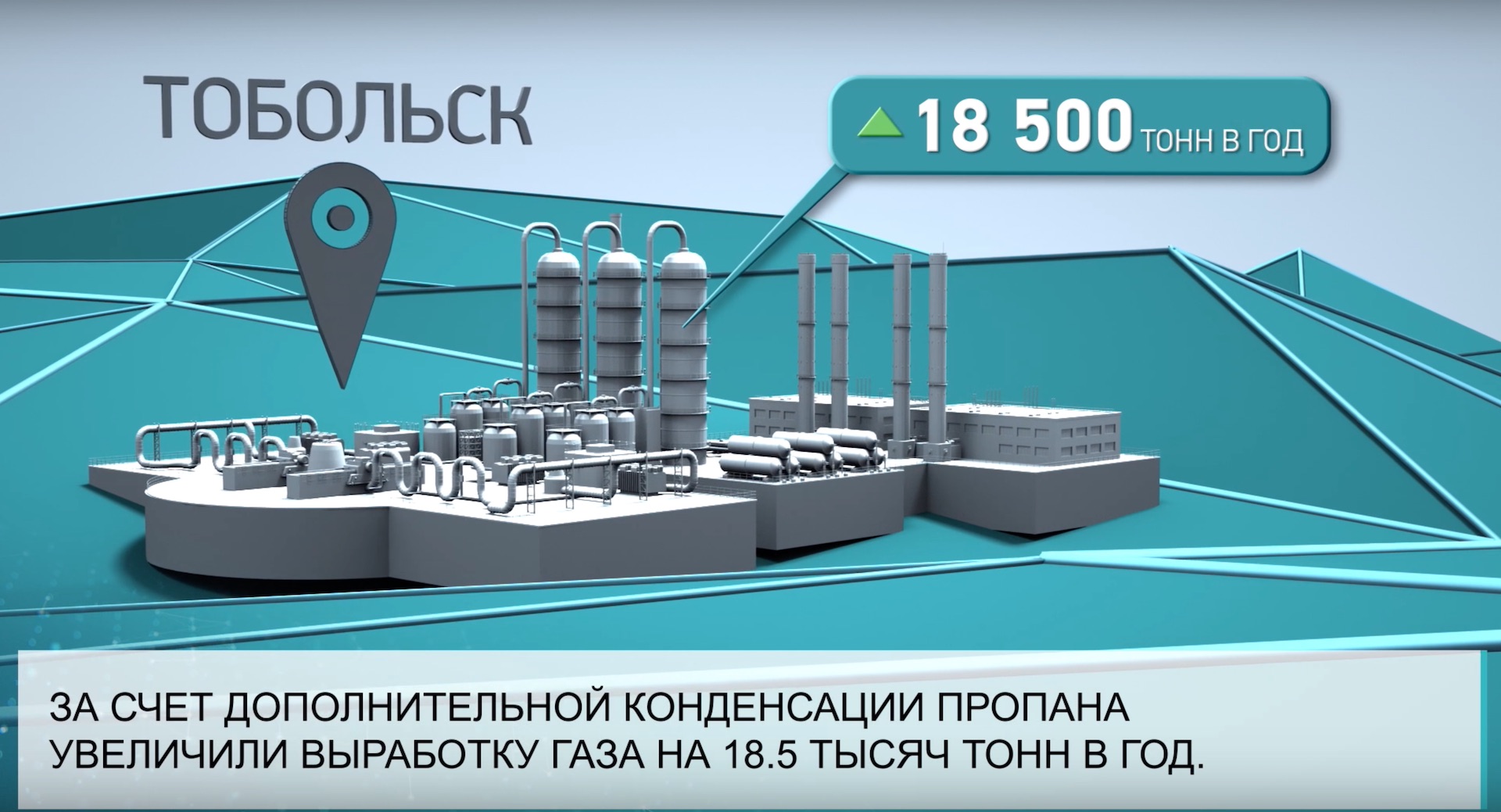
Petrochemicals is a rather conservative industry, especially when it comes to production technology. New processes have been developed for decades, and making changes to them, even beneficial to the business, requires an extremely balanced approach. In large-scale production, you will not conduct A / B testing in a few mouse clicks, while some other modern approaches are quite in demand here. Why petrochemicals are good is the real sector. The result of your work is tangible: you can see that the volume of production has increased, profit has grown due to a more accurate forecast of the price of raw materials, and the client receives goods faster thanks to optimized logistics. In terms of automation, petrochemistry is traditionally one of the leading industries.
First, let's deal with the definitions. There are many terms, but for ourselves we define a digital double as a virtual copy of an object or process, made with sufficient accuracy and functionality so that it can be used to make decisions. Further, it all depends on the functionality that is embedded in the digital double.

For example, a satellite photograph of a city on Google maps is a digital twin of this city, although with very limited functionality. But if this photo is supplemented with data - put on the map roads and streets, and on the streets add information about stops and routes of public transport, traffic intensity and road repairs, you will get a very useful digital double that each of us has in our smartphone - GPS- navigator. With its help it is possible not only at the beginning of the path to choose the optimal method and route of movement, but also in the process to adjust it depending on the changing traffic situation. In addition, the navigator prompts the speed allowed on the road section. Thus, the digital double of the city allows us to get to the destination as quickly as possible and at the same time not to violate the speed limit.
If we draw a parallel with petrochemistry, the task is similar: to operate the technological process of production of products as efficiently as possible, without violating safety rules. Efficiency in complex chemical production is a complex concept. It is important not only to produce the maximum amount of quality products, but also to spend the minimum amount of energy resources on the production process, to develop a minimum of by-products, to minimize equipment wear and environmental impact.
To solve this problem, the production also uses digital doubles - virtual copies of the technological process, developed using specialized software. They, like the GPS navigator, allow you to choose the optimal production method at the beginning of the path, and in the process help operators to conduct the regime as efficiently as possible under conditions of changing external factors. External factors mean the composition of raw materials, weather conditions, market conditions, and much more that the operator cannot influence, but can take into account and respond in a timely manner.
So we come to the true purpose of the digital counterparts of petrochemical processes. Their goal is to help production technicians, engineers and technologists make optimal decisions in complex multiparameter chemical processes, and in some cases, digital counterparts can completely eliminate the human factor.
Types of digital twin models we use in the petrochemical industry
Physico-chemical model of the technological process. Using the basic laws of chemical kinetics and thermodynamics, the physical and chemical processes occurring in technological equipment are simulated - heat and mass transfer, reaction processes. Such models allow what-if-analysis to be carried out for various raw materials, process conditions, etc.
For example, using our model, we can now test the sensitivity of the country's largest gas fractionating unit to changes in the composition and consumption of raw materials caused by the launch of the Zapsibneftekhim complex. The operator can choose the technological mode that allows you to effectively separate the components, which means that you get more targeted products and fewer by-products.
Still such models allow to develop new technological schemes of production.
A statistical model developed using advanced analytics methods. This type of simulation allows you to recreate on your computer any processes and phenomena with a sufficient amount and quality of statistical data. It is used to supplement physicochemical models or as an independent model. Such models allow the development of recommendation systems, decision support systems, and predictive diagnostics.
Hydrodynamic model - simulates the dynamic flow of liquid and gaseous media in pipelines and devices, taking into account mass transfer and reaction processes. It allows to identify non-optimal parameters of the flow of media, areas with a risk of formation of deposits, to determine the potential for intensification of the process.
Mechanical model - simulates the mechanical properties of equipment over time depending on the mechanical load and technological parameters. Allows to predict mechanical malfunctions.
All the above types of modeling can complement each other - give the output data necessary for the input of another type of modeling.
A digital process twin can be developed using either one type of simulation or several. It all depends on specific goals. How the decision is made, I will tell in the next paragraph.
“Honey, we will have a digital double”
How to understand that it’s time to start a digital double? Everything is very simple here.
The first criterion: a digital double is needed where there is potential for increasing the efficiency of the process by developing a technological model. The potential can be in reducing the human factor in production management, in obtaining additional data for decision making, in testing hypotheses on improving production efficiency, etc.
The second criterion: the economic effect of introducing a digital twin should be higher than the cost of its development.
How does twin development work?
The technological model is the result of the work of a cross-functional team of production operating technologists, modeling experts, data analysis experts, factory lab employees and many more.
The model development process includes 4 stages.
1. The preparatory phase. Even before the development of a digital model begins, the manager coordinating the development, the developer himself and the production technologist discuss what accuracy the model is needed to solve a specific problem, analyze the completeness of the source data to develop the model of the required accuracy. A business case is being formed: the potential effect and development costs are determined. If the effect is higher than the cost, go to the next step.
2. The stage of collecting source data. At this stage, the data necessary for the development of the model is collected: process parameters, characteristics of the equipment used, the geometry of the apparatus and pipelines, if necessary, additional laboratory analyzes are carried out.
3. The development phase. Depending on the type of simulation, model development is carried out in various software. Physico-chemical modeling - in AspenOne Engineering software package from AspenTech; statistical models are developed using a programming language such as Python; hydrodynamic and mechanical modeling - in ANSYS software products.
4. Verification phase. The developed model is compared with real production. If the designed double provides the necessary accuracy, the model can be operated, if not, the reasons are established, and the model is finalized.
The average development time of a digital process twin is from 6 to 12 months. And the exact period depends on the necessary accuracy of the model, the availability and completeness of the source data, and much more.
Before starting the development of a digital model, the developer and production engineer carry out the preparatory phase: discuss what accuracy the model is needed to solve a specific problem, analyze the amount of input data to develop a model of the required accuracy. The preparatory phase is followed by the development phase, and the development phase is followed by the verification phase of the model with real production data.
If the designed double provides the necessary accuracy, you can begin to operate the model. At the output, the production technologist receives specific recommendations for maintaining the technological regime.
And what is the output?
If you go back to the example with GPS - how to calculate the effect of having a navigator on your smartphone? And the cumulative effect of having a navigator on most road users?
The cumulative effect of the development of technological models is also not easy to name. It consists not only of the direct effect, but also of the optimization of the process and the decisions on the modernization of production. The speed and quality of decisions based on these digital models will reduce the likelihood of emergency situations. We can say that the presence of digital counterparts in SIBUR has become an integral part of the culture of making data-driven decisions and achieving a “smart result”. In estimates of the economic effect, this is hundreds of millions of rubles a year.


What so far cannot be clothed in the form of a digital double is man. Otherwise, we would have initiated this technology :) So if you work with data, like to understand technological and business processes and understand what this blog is about, we have a selection of SIBUR's vacancies .